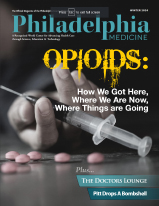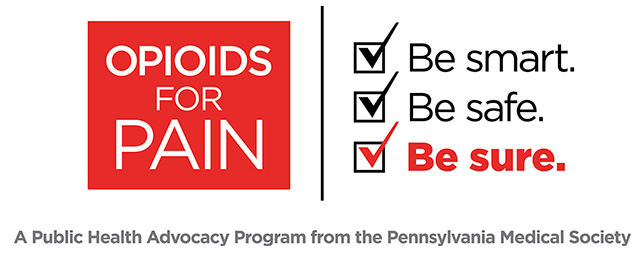The following update was released by the Pennsylvania Department of Health on July 18:
Summary:
Updates were made to the CDC guidance for discontinuing Transmission-Based Precautions on July 17, 2020. These changes include:
- Except for rare situations, a test-based strategy is no longer recommended to determine when to discontinue Transmission-Based Precautions.
- For patients with severe to critical illness or who are severely immunocompromised (1), the recommended duration for Transmission-Based Precautions was extended to 20 days after symptom onset (or, for asymptomatic severely immunocompromised (1) patients, 20 days after their initial positive SARS-CoV-2 diagnostic test).
- Other symptom-based criteria were modified as follows:
- Changed from “at least 72 hours” to “at least 24 hours” have passed since last fever without the use of fever-reducing medications.
-
- Changed from “improvement in respiratory symptoms” to “improvement in symptoms” to address expanding list of symptoms associated with COVID-19.
Transmission-Based Precautions are used by healthcare facilities to care for patients with confirmed or probable COVID-19, or in response to known or suspected exposure to COVID-19 according to PA-HAN-497 and CDC guidelines. These guidelines apply to healthcare facilities where Transmission-Based Precautions are used. This HAN replaces PA-HAN-502. For persons with COVID-19 that are undergoing home-based isolation, please refer to CDC Guidance. If you have questions about this guidance, please contact DOH at 1-877-PA-HEALTH (1-877-724-3258) or your local health department.
All guidelines for discontinuing Transmission-Based Precautions in this HAN are in reference to COVID-19 Transmission-Based Precautions. Continue the use of Standard Precautions for all residents. Continue the use of Transmission-Based Precautions for other conditions as per facility policy (e.g. for C. difficile or drug-resistant organisms).
The decision to discontinue Transmission-Based Precautions for patients with confirmed COVID-19 should be made using a symptom-based strategy as described below. Meeting criteria for discontinuation of Transmission-Based Precautions is not a prerequisite for discharge from a healthcare facility.
A test-based strategy is no longer recommended (except as noted below) because, in the majority of cases, it results in prolonged isolation of patients who continue to shed detectable SARS-CoV-2 RNA but are no longer infectious.
SYMPTOM-BASED STRATEGY FOR DISCONTINUING TRANSMISSION-BASED PRECAUTIONS
Patients with mild to moderate illness who are not severely immunocompromised:
- At least 10 days have passed since symptoms first appeared and
- At least 24 hours have passed since last fever without the use of fever-reducing medications and
- Symptoms (e.g., cough, shortness of breath) have improved
Note: For patients who are not severely immunocompromised (1) and who were asymptomatic throughout their infection, Transmission-Based Precautions may be discontinued when at least 10 days have passed since the date of their first positive viral diagnostic test.
Patients with severe to critical illness or who are severely immunocompromised (1):
- At least 20 days have passed since symptoms first appeared and
- At least 24 hours have passed since last fever without the use of fever-reducing medications and
- Symptoms (e.g., cough, shortness of breath) have improved
Note: For severely immunocompromised (1) patients who were asymptomatic throughout their infection, Transmission-Based Precautions may be discontinued when at least 20 days have passed since the date of their first positive viral diagnostic test.
As described in a CDC Decision Memo, an estimated 95% of severely or critically ill patients, including some with severe immunocompromise, no longer had replication-competent virus 15 days after onset of symptoms; no patients had replication-competent virus more than 20 days after onset of symptoms. Because of the risks for transmission and the number of patients in healthcare settings at risk for severe illness if infected with SARS-CoV-2, a conservative approach was taken when assigning duration of Transmission-Based Precautions. However, because the majority of severely or critically ill patients no longer appear to be infectious 10 to 15 days after onset of symptoms, facilities operating under crisis standards of care might choose to discontinue Transmission-Based Precautions at 10 to 15 days, instead of 20 days, in order to maximize resources for those earlier in their clinical course who are at highest risk for being a source of transmission.
TEST-BASED STRATEGY FOR DISCONTINUING TRANSMISSION-BASED PRECAUTIONS
In some instances, a test-based strategy could be considered for discontinuing Transmission-based Precautions earlier than if the symptom-based strategy were used. However, as described in a CDC Decision Memo, many individuals will have prolonged viral shedding, limiting the utility of this approach. A test-based strategy could also be considered for some patients (e.g., those who are severely immunocompromised (1) in consultation with local infectious diseases experts if concerns exist for the patient being infectious for more than 20 days.
The criteria for the test-based strategy are:
Patients who are symptomatic:
- Resolution of fever without the use of fever-reducing medications and
- Symptoms (e.g., cough, shortness of breath) have improved, and
- Results are negative from at least two consecutive respiratory specimens collected ≥24 hours apart (total of two negative specimens) tested using an FDA-authorized molecular viral assay to detect SARS-CoV-2 RNA. See Interim Guidelines for Collecting, Handling, and Testing Clinical Specimens for 2019 Novel Coronavirus (2019-nCoV).
Patients who are not symptomatic:
- Results are negative from at least two consecutive respiratory specimens collected ≥24 hours apart (total of two negative specimens) tested using an FDA-authorized molecular viral assay to detect SARS-CoV-2 RNA. See Interim Guidelines for Collecting, Handling, and Testing Clinical Specimens for 2019 Novel Coronavirus (2019-nCoV).
DISCONTINUATION OF EMPIRIC TRANSMISSION-BASED PRECAUTIONS FOR PATIENTS SUSPECTED OF HAVING COVID-19:
The decision to discontinue empiric Transmission-Based Precautions by excluding the diagnosis of COVID-19 for a suspected COVID-19 patient can be made based upon having negative results from at least one FDA Emergency Use Authorized COVID-19 molecular assay for detection of SARS-CoV-2 RNA.
- If a higher level of clinical suspicion for COVID-19 exists, consider maintaining Transmission-Based Precautions and performing a second test for SARS-CoV-2 RNA.
- If a patient suspected of having COVID-19 is never tested, the decision to discontinue Transmission-Based Precautions can be made based upon using the symptom-based strategy described above.
Ultimately, clinical judgement and suspicion of SARS-CoV-2 infection determine whether to continue or discontinue empiric Transmission-Based Precautions.
DISCHARGE OF PATIENTS WITH COVID-19 FROM A HEALTHCARE FACILITY
Patients should be discharged from the healthcare facility whenever clinically indicated.
If discharged to home:
- Isolation should be maintained at home if the patient returns home before discontinuation of Transmission-Based Precautions.
- The decision to send the patient home should be made in consultation with the patient’s clinical care team and local or state public health departments. It should include considerations of the home’s suitability for and patient’s ability to adhere to home isolation recommendations.
- Guidance on implementing home care of persons who do not require hospitalization and the discontinuation of home isolation for persons with COVID-19 is available.
If discharged to a skilled nursing facility or other long-term care facility (e.g., personal care home, assisted living facility), AND
- Transmission-Based Precautions are still required, they should go to a facility with an ability to adhere to infection prevention and control recommendations for the care of COVID-19 patients. Preferably, the patient would be placed in a location designated to care for COVID-19 residents.
- Transmission-Based Precautions have been discontinued, they do not require further restrictions, based upon their history of COVID-19.
SARS-CoV-2 Illness Severity Criteria (adapted from the NIH COVID-19 Treatment Guidelines):
Note: The studies used to inform this guidance did not clearly define “severe” or “critical” illness. This guidance has taken a conservative approach to define these categories. Although not developed to inform decisions about when HCP with SARS-CoV-2 infection may return to work, the definitions in the National Institutes of Health (NIH) COVID-19 Treatment Guidelines are one option for defining severity of illness categories. The highest level of illness severity experienced by the HCP at any point in their clinical course should be used when determining when they may return to work.
Mild Illness: Individuals who have any of the various signs and symptoms of COVID 19 (e.g., fever, cough, sore throat, malaise, headache, muscle pain) without shortness of breath, dyspnea, or abnormal chest imaging.
Moderate Illness: Individuals who have evidence of lower respiratory disease by clinical assessment or imaging and a saturation of oxygen (SpO2) ≥94% on room air at sea level.
Severe Illness: Individuals who have respiratory frequency >30 breaths per minute, SpO2 <94% on room air at sea level (or, for patients with chronic hypoxemia, a decrease from baseline of >3%), ratio of arterial partial pressure of oxygen to fraction of inspired oxygen (PaO2/FiO2) 50%.
Critical Illness: Individuals who have respiratory failure, septic shock, and/or multiple organ dysfunction.
FOOTNOTES
- The studies used to inform this guidance did not clearly define “severely immunocompromised”. For the purposes of this guidance, CDC used the following definition that was created to more generally address HCP occupational exposures.
- Some conditions, such as being on chemotherapy for cancer, untreated HIV infection with CD4 T lymphocyte count < 200, combined primary immunodeficiency disorder, and receipt of prednisone >20mg/day for more than 14 days, may cause a higher degree of immunocompromise and require actions such as lengthening the duration of HCP work restrictions.
- Other factors, such as advanced age, diabetes mellitus, or end-stage renal disease, may pose a much lower degree of immunocompromise and not clearly affect occupational health actions to prevent disease transmission.
- Ultimately, the degree of immunocompromise for HCP is determined by the treating provider, and preventive actions are tailored to each individual and situation.
For skilled nursing facilities and other long-term care facilities: Discontinuing “exposed” or “affected” status for a unit or facility
Note that calling a unit or facility exposed or affected by COVID-19 is not an official designation by the DOH; however, these terms can assist facilities with understanding the proper implementation of infection prevention and control measures as described in PA-HAN-509, PA-HAN-492 and PA-HAN-496.
To declare a unit or facility that has housed COVID-19-positive residents unaffected by COVID-19, all of the following conditions must apply:
- All residents on the unit who were confirmed or probable cases of COVID-19 must have met the criteria for discontinuation of Transmission-Based Precautions
- A minimum of 14 days have passed since the implementation of Transmission-Based Precautions for COVID-19 and other infection prevention and control interventions for COVID-19
- All residents who were not confirmed or probable cases of COVID-19 remain asymptomatic
- All staff remain asymptomatic or have met return-to-work criteria described in PA-HAN-516
- No additional or ongoing exposures have occurred (e.g. through exposure infectious healthcare workers)
The 14-day minimum listed above assumes infection prevention and control (IPC) measures have been successfully implemented. Concerns about poor IPC practices, critical PPE shortages, and other challenges affecting implementation should extend the use of transmission-based precautions. To assure infection prevention and control measures are adequate, the best practice is to have ongoing frequent monitoring of practices including hand hygiene, PPE use, and environmental cleaning. A hand hygiene audit toolkit is available to assist with monitoring and can be adapted for monitoring practices other than hand hygiene.
In the context of the ongoing COVID-19 pandemic, continue to follow infection prevention and control practices described in other DOH, CDC, and CMS guidance for all long-term care facilities.




